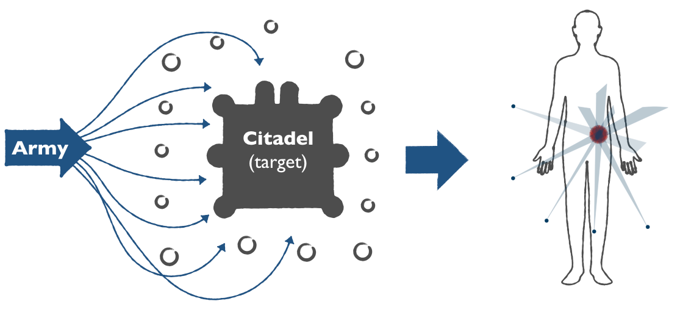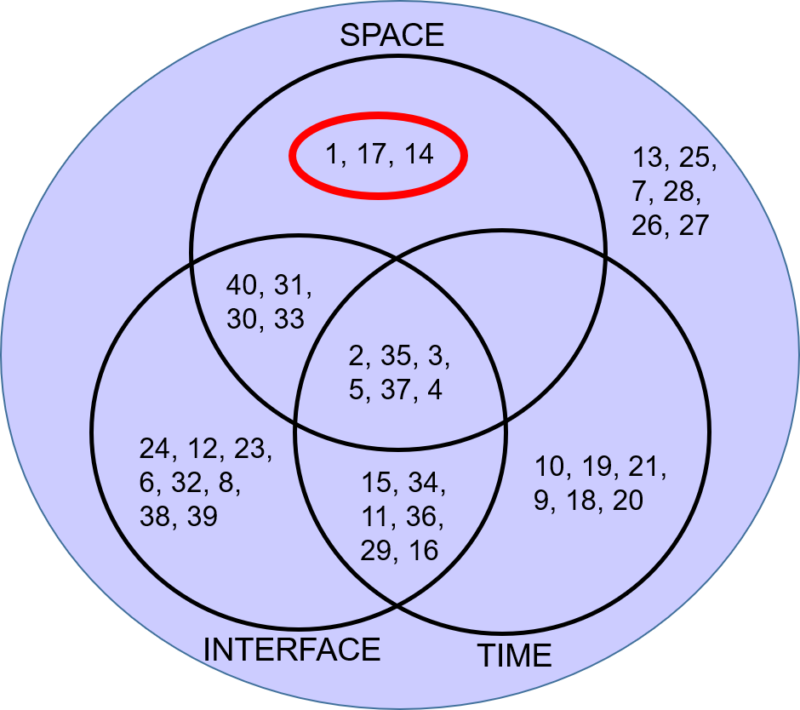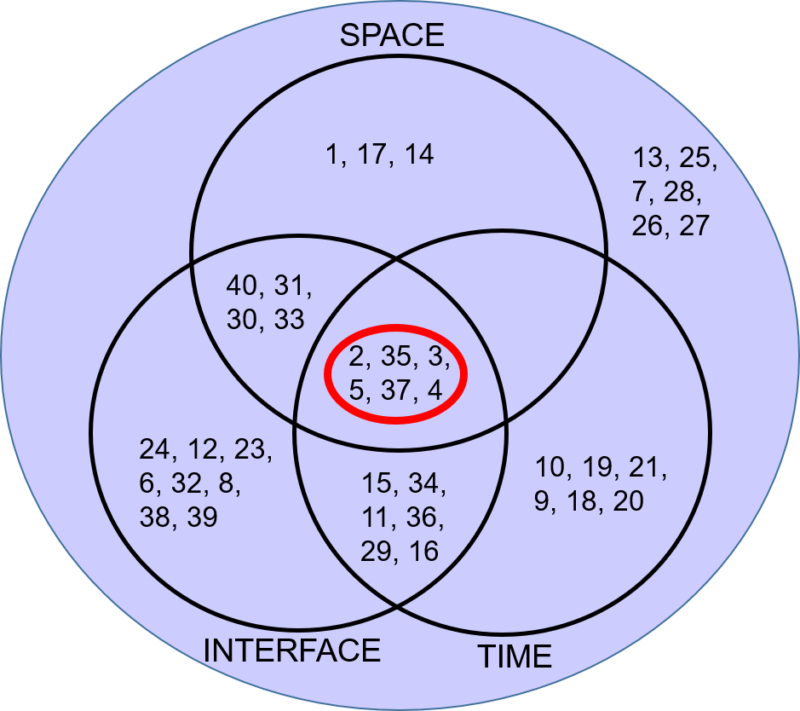For those poor unfortunate people that have never heard fo TRIZ, one of the few problem solving lessons come via the German psychologist Karl Duncker, who posed his now famous ‘radiation problem’. In the problem, a doctor has a patient with a malignant tumour. The patient cannot be operated upon, but the doctor can use a particular type of ray to destroy the tumour. However, the ray will also destroy healthy tissue. At a lower intensity the rays would not damage the healthy tissue but would also not destroy the tumour.
When asked what they would do to destroy the tumour, only about 10% of people manage to generate a meaningful solution to this problem.
This percentage rises to about 30% after subjects are exposed to a second, analogous problem. Here’s the usual one:
“A small country was ruled from a strong fortress by a dictator. The fortress was situated in the middle of the country, surrounded by farms and villages. Many roads led to the fortress through the countryside. A rebel General vowed to capture the fortress. The General knew that an attack by his entire army would capture the fortress. He gathered his army at the head of one of the roads, ready to launch a full-scale direct attack. However, the general then learned that the dictator had planted a ring of mines on each of the roads. The mines were set so that any large group of enemy troops would set them off. It therefore seemed impossible to capture the fortress. However, the general devised a simple plan. He divided his army into small groups and dispatched each group to the head of a different road. When all was ready he gave the signal and each group marched down a different road. Each group continued down its road to the fortress so that the entire army arrived together at the fortress at the same time. In this way, the General captured the fortress and overthrew the dictator.”
The 30% of people that successfully recognised this dictator problem was analogous to the tumour problem, were then able to translate the General’s strategy and apply it to solve the tumour doctor’s problem:

From a TRIZ perspective, the General’s strategy was basically to use Inventive Principle 1, Segmentation.
That’s the easy bit of the problem-solving story.
In Duncker’s context, he had to do the hard work of finding the tumour/fortress analogy (and even here, some might argue it is quite contrived). Perhaps the real power of TRIZ is it makes it much easier to find analogies so that the problem solver themselves can work through a problem without clues from a friendly analogy-supplying psychologist.
The tumour problem is a classic physical contradiction: a high dose of the rays is required to destroy the tumour and a low dose is required to avoid damage to the surrounding tissue. And, likewise, for the fortress problem, a high number of troops are needed to destroy the dictator and a low number are required to weave past the mines.
Both problems require high and low. Moreover, when we start thinking about how the contradiction might be separated, it quickly becomes clear that Separation in Space is the most viable solution strategy in both cases. Which then means we can jump to a prioritised list of the Inventive Principles that others have previously used to solve the problem:

The advantage we get here, apart for the structured analogy approach, is that, in addition to receiving the Segmentation solution strategy, we also get Principle 17, Another Dimension. Which takes us even closer to the actual solutions. Destroying the tumour by segmenting the ray is part of the solution, but we only get to something that might work when we also realise that the segmented rays need to arrive from different directions.
Talking of contrived, I first encountered Duncker’s radiation problem while reading David Epstein’s otherwise rather excellent book, Range (more about that in the February Issues of the SI ezine). The main thesis of Range is that generalists make better wicked problem solvers. Largely because they’ve seen a broader range of problems and thus have access to a broader range of potential analogies. I suspect he was also picking up on the post-Duncker finding that the 30% of people solving the radiation problem increased to something over 90% when they were given multiple analogies, and therefore wanted to provide an analogy of his own. Which ends up going something like this:
“A small-town Fire-Chief arrives at the scene of a woodshed fire. The woodshed was about 50 yards from a very conveniently placed lake, and true to the cliché, a chain of bucket-passing locals had been formed to transfer water from the lake to the fire. Alas, as each bucket load of water was thrown on the fire, it wasn’t really having any impact.”

So, what did the Fire-Chief do?
Now I don’t know whether Epstein was being very clever here, or whether he merely demonstrated the difficulty of finding analogous situations when you don’t know TRIZ. In his mind, the Fire Chief problem is similar to the tumour and dictator problems. And, true enough it is also a high-and-low contradiction. In that we need a high amount of water to put out the fire, and each bucket-load only contains a small amount. But it is also 180 degrees opposite to the tumour and dictator problems. In that, solution-wise, the bucket-chain has in effect already used Segmentation, but it is not helping.
Rather what’s required – and what the Dire Chief knew to recommend – was to break up the chain, give every person a bucket, send them to the lake to fill it, then all come back and throw their bucket-load onto the fire simultaneously.
i.e. while the fire problem is indeed a high-and-low problem, it’s solvable not just by a Separation in Space strategy, but also by Separation in Time and by Interface. In which case, we learn that Principle 5, Merging is more likely to help:

It’s too late for Karl Duncker, who passed away in 1940, but if anyone knows how to contact David Epstein, I’ll be happy to send him a copy of Business Matrix 3.0. Help him to work out how to build analogies at will. And turn him into a proper specialist generalist.
